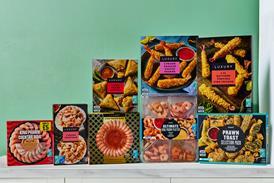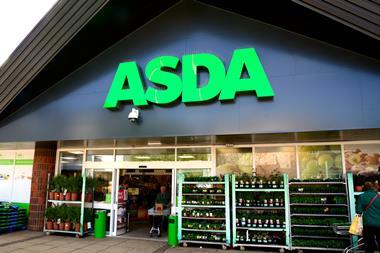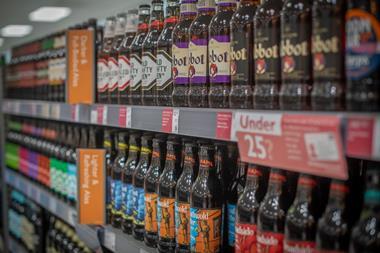Grocery multiples now retail over £67bn per annum and non-food (clothing, general merchandise, music and video and electrical) is the fastest growing category, with a 15% year-on-year growth according to ACNielsen Scantrack.
Tesco and Asda dominate hypermarket shopping and the growth in market share of these retailers is being driven by consumers increasing the proportion of non-food and leisure spend at their out-of-town stores.
A third of all Asda shoppers and more than 45% of Tesco shoppers buy non-food as part of their regular food shop [Homescan, 12 weeks to August 7 2004]. So it is no surprise that Tradetrak now shows Tesco’s highest ever market share at 28.8% and a growth in Asda market share by nearly 1% since last year.
In the five years since Asda joined Wal-Mart, its grocery market share has increased from 13% to over 16%, without store acquisition, and Asda has overtaken Sainsbury on total till market share which, in the 12 weeks to August, sees Asda at 17.3%. The recent trading update from Wal-Mart also confirmed a good underlying growth in Asda’s core food business over the past six months.
With a quarter of all fmcg sales now made through hypermarkets (stores over 40,000 square feet) there has been a strategic impact on many formats in both food and non-food retailing.
Mike Watkins, manager of retailer services at ACNielsen, said: “Tesco and Asda, with a combined share of 46%, have a scale and expertise that is now as great a threat to channel leaders in non-foods as they are to Sainsbury and Morrisons, which are food-dominant retailers.”
However, Watkins added that Sainsbury and Morrisons, with their different and evolving strategies, should also expect to increase grocery market share in the longer term. “There is now as much differentiation between the top two food retailers and the rest of the retail market as there is between the grocery multiples and convenience retailers,” he said.
With the grocery market mature in terms of store numbers, lower growths anticipated and price deflation in many grocery categories, it is consumer acceptance of hypermarkets that is the watershed that has been reached.
As long as consumers see a growth in disposable income and the feelgood factor of house price inflation, then non-food sales at out-of-town food stores will continue to increase, as will the overall market share of Tesco and Asda.
Tesco and Asda dominate hypermarket shopping and the growth in market share of these retailers is being driven by consumers increasing the proportion of non-food and leisure spend at their out-of-town stores.
A third of all Asda shoppers and more than 45% of Tesco shoppers buy non-food as part of their regular food shop [Homescan, 12 weeks to August 7 2004]. So it is no surprise that Tradetrak now shows Tesco’s highest ever market share at 28.8% and a growth in Asda market share by nearly 1% since last year.
In the five years since Asda joined Wal-Mart, its grocery market share has increased from 13% to over 16%, without store acquisition, and Asda has overtaken Sainsbury on total till market share which, in the 12 weeks to August, sees Asda at 17.3%. The recent trading update from Wal-Mart also confirmed a good underlying growth in Asda’s core food business over the past six months.
With a quarter of all fmcg sales now made through hypermarkets (stores over 40,000 square feet) there has been a strategic impact on many formats in both food and non-food retailing.
Mike Watkins, manager of retailer services at ACNielsen, said: “Tesco and Asda, with a combined share of 46%, have a scale and expertise that is now as great a threat to channel leaders in non-foods as they are to Sainsbury and Morrisons, which are food-dominant retailers.”
However, Watkins added that Sainsbury and Morrisons, with their different and evolving strategies, should also expect to increase grocery market share in the longer term. “There is now as much differentiation between the top two food retailers and the rest of the retail market as there is between the grocery multiples and convenience retailers,” he said.
With the grocery market mature in terms of store numbers, lower growths anticipated and price deflation in many grocery categories, it is consumer acceptance of hypermarkets that is the watershed that has been reached.
As long as consumers see a growth in disposable income and the feelgood factor of house price inflation, then non-food sales at out-of-town food stores will continue to increase, as will the overall market share of Tesco and Asda.



















No comments yet